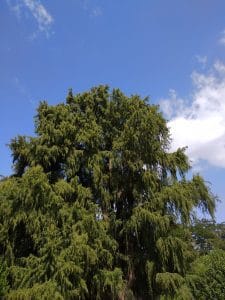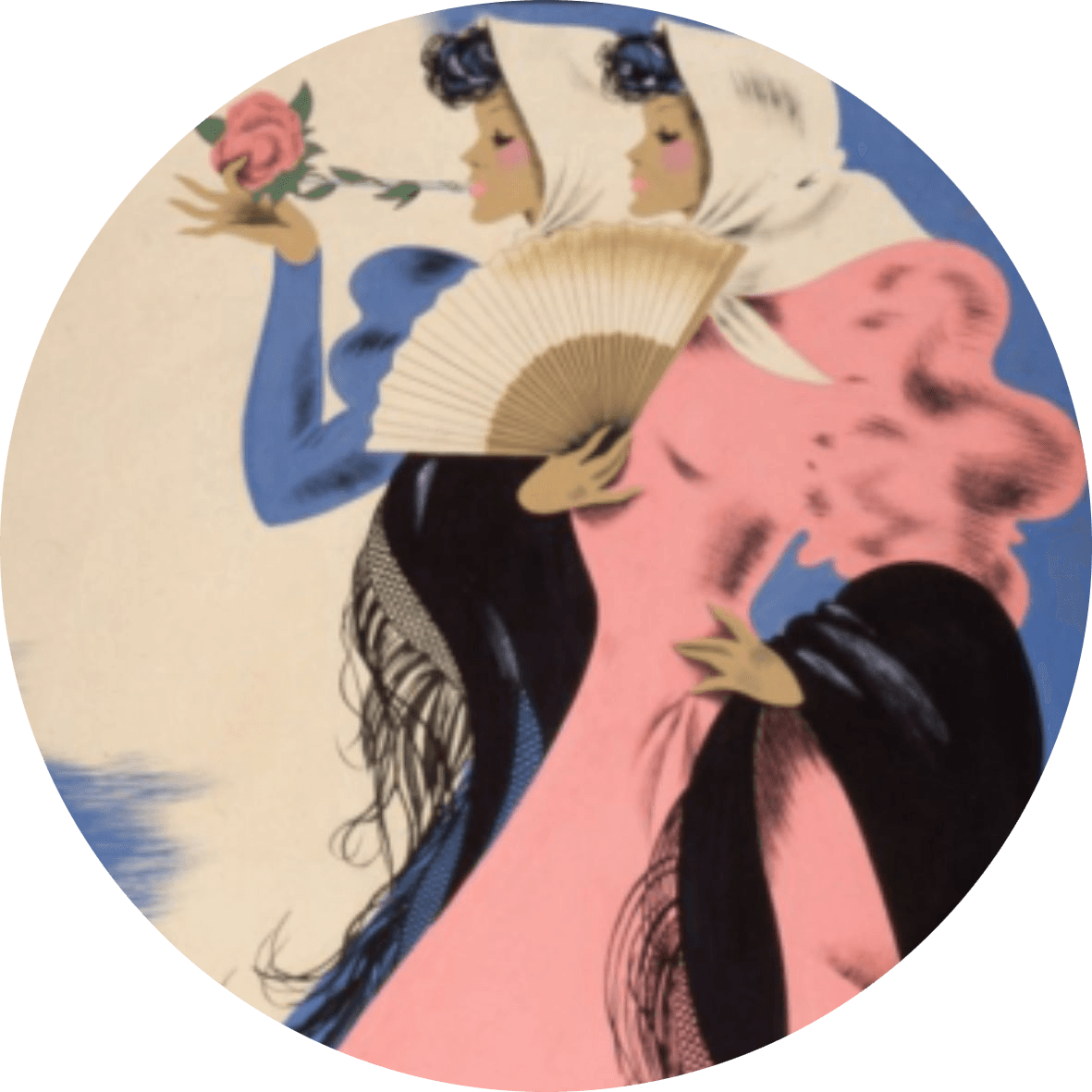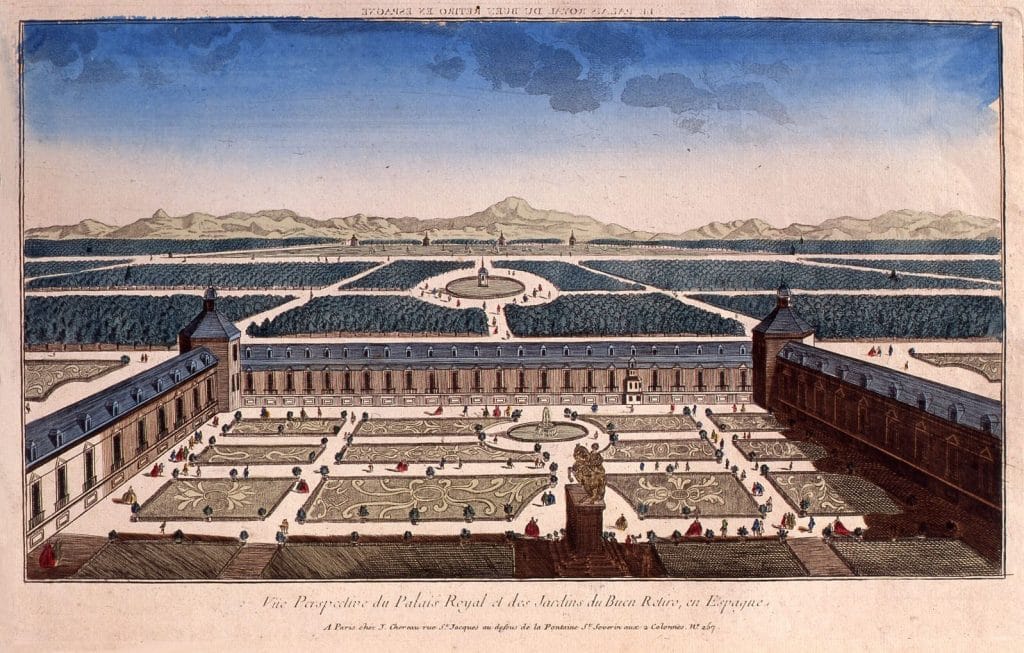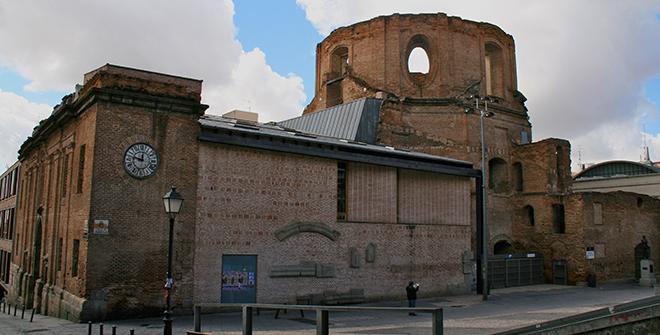If you take a wander around Retiro on a Sunday afternoon, you’ll encounter people getting up to all sorts beneath the foliage, from spiritually-minded yogis contorting their bodies into ever more impossible shapes, to carnally-inclined lovers locking lips. But when the park was first opened to the public in 1868, such scenes would have scandalised. Back then only “decent people” were admitted and they had to adhere to a strict dress code which stipulated that women must have their shoulders covered at all times and men had to wear both a cape and a hat. As this month marks the 150th anniversary since the crown handed over Retiro to Madrid Council, I thought I’d take a look at the history of the park from when Madrid was founded to the present day.
Spiritual Retreat turned Pleasure Palace
King Philip II, the man responsible for moving the royal court to Madrid in the 16th century, was extremely devout, so much so that he had special rooms constructed adjacent to the church of San Jerónimo Real (that stands overlooking the Prado) in order to hear mass from his bedroom. Then the church was situated in an uncultivated wilderness that stood to the east of Madrid proper. Away from the hustle and bustle, the area became known as el Retiro that is, the retreat. A place of quiet contemplation for the king.
Retiro continued this way until Philip’s grandson, Philip IV took the throne. His father, Philip the III had been a bit of a disappointment all round. A libertine who had little interest in ruling and was not popular with his subjects. While Philip IV did his best to make amends for his father’s bad behaviour, he was not as high minded as his grandfather and found having to continually behave in a dignified manner befitting a king to be a bit of a strain.
This king needed somewhere where he could let his hair down and have fun. A place where he could indulge his love of art (Phillip was patron to Velázquez) and theatre (he also counted many actresses as his lovers). His Valido, that is the man who managed most of the business of governance for him, the Conde Duque de Olivares decided to create such a space for Philip; a place where the king could privately indulge his passion for more worldly pursuits. And so, a complex of palaces and gardens was built.
Though ordinary people were not allowed entrance to this splendid area, they heard about the vast sums being spent to create it and felt more than a little bit peeved. The crown, on the brink of bankruptcy after having overextended itself by getting involved in numerous armed conflicts (including the 30 Years’ War), was squeezing the general populace for extremely high taxes. And it wasn’t as if this was a quick job, work began in 1630 and didn’t stop until 1660, by which time the palace had more than 20 buildings with extensive grounds built around.
Today, just two buildings stand as testament to the Valido’s extravagance; one is the Salón de los Reinos – which is supposedly being refitted as an annex for the Prado, but is still suspiciously abandoned looking – and the other is the Casón del Buen Retiro which is also part of the Prado but not open to the public. The rest of the complex was damaged or destroyed during Napoleon’s invasion of Madrid.

An Explosive Occupation
Many of Napoleon’s troops were camped out in Retiro during their occupation of Madrid and during that time used the park to practise manoeuvres. They blew so many things up in the process, that only one tree remains from those originally planted. This tree is an ahuehuete, a species native to the “New World” which has been known to live up to 6,000 years in Mexico. It is said to have been planted in Retiro in 1632 back when work on the palace had just begun. Many have theorised that it was only able to survive because the troops used the v-shaped nook in its trunk as a stand for a cannon.

The only other part of the original palace gardens that remains is the lake. Originally built in 1634, it used to have a small island in the middle where plays were put on. Where the plebs now splash around in little row boats, the king and his court once rode in lavish gondolas and barges of silk, wood, glass, silver and gold, while orchestras played in an adjacent boat. Re-enactments of naval battles were also popular entertainment, probably because at least in these wars Phillip IV got to win!
Subsequent kings added their own touches to the grounds too. The ever practical and progressive Carlos III had an observatory and a porcelain factory built, though sadly only the former remains standing – depending on which rumour you believe either the French or the liberating army of Brits destroyed this on purpose in order to get rid of the competition in Europe for the production of fine China. It was also Charles III who began the tradition of allowing the general public access to certain parts of the park.
Caged Animals
After Napoleon had been vanquished, Ferdinand VII took the throne. While he still let the commoners into parts of the park, like his far more benevolent and much more impressive grandfather, he also had a zoo constructed that was strictly for the pleasure of royals only. Still, once he popped off and his daughter was deposed, Casa de Fieras (the house of the wild beasts) was opened to the public and became a popular attraction for Madrileños. However, the animals themselves, confined to extremely cramped enclosures, were no better off. And things only got worse during World War II when the population suddenly skyrocketed as zoos around Europe sent their animals to Madrid to live out the war in peace. It was decided that something had to be done, so a new more spacious zoo was created in Casa de Campo and the animals moved on in 1972.
Though these captive animals have gone, Retiro is not without wildlife. Squirrels are rumoured to live among the trees (let me know if you’ve seen one because I never have), it’s also said that an eagle nesting in the nearby Torre de Valencia regularly swoops over the park, and last but definitely not least, a gang of peacocks roams free around Cecilio Rodríguez Gardens – a little known, yet delightful corner of Retiro.

Modern Retiro
Today’s Retiro bears little resemblance to how the garden once looked when it was first landscaped. Most of its notable buildings and monuments date from after the time it fell into public hands. One of the most iconic of these buildings is the Palacio de Cristal which was created in 1887 to house an exhibition on the Philippines (then a Spanish colony). These days the Casa de Cristal and the nearby Palacio de Velázquez are part of the Reina Sofia and art exhibitions are regularly held in both buildings.

Just like in its earliest incarnation, concerts and plays are regularly held in the park, the notable difference being that now the audience is the whole of Madrid, not just a privileged few.
If you enjoyed this post and would like to find out more about the history of Madrid, why not book yourself in for a unique walking tour of the city?






Pingback: Caught on Canvas: a Rogues' Gallery of Spanish Rulers - The Making of Madrid
Pingback: Madrid off the Beaten Track - The Making of Madrid
Pingback: Quiet corners of the Prado - The Making of Madrid
Pingback: Hidden Corners of Retiro: The Artificial Mountain - The Making of Madrid
Pingback: The Bear and the Strawberry Tree - The Making of Madrid
Pingback: Madrid’s Hidden Gems: The Manzanares River, with Clare Starkie - The Making of Madrid